How To Choose the Right Dining Room Chandelier or Pendant?
Creating a cozy and tranquil dining room for your family goes beyond just beautiful furniture like dining tables and stylish kitchenware. A crucial element is the right lighting that offers depth and sets the mood. The perfect ambiance often comes from stunning chandeliers or pendant lights illuminating the space generously.
However, selecting the ideal fixture isn't easy; there are various factors to consider. In this guide, Rowabi will explore key aspects to keep in mind when choosing the perfect chandelier or pendant light for your dining room.
- Different types of lighting for dining rooms
- How do you choose the right chandelier or light fixture for a dining room?
- Select a shade
- Ceiling light measurements
- Lighting around your table
- Lighting location
- Style
- Installation
- Ambiance
- Multi-pendant dining room lighting
- Medium & large dining room pendant lighting
- How to choose the right size lighting for dining room?
- FAQs
- Conclusion
Different types of lighting for dining rooms
There are four primary types of lighting commonly used in dining rooms: chandeliers, pendant lights, sconces, and recessed lighting. These options cater to different design preferences and lighting needs, allowing creativity and innovation in contemporary spaces.
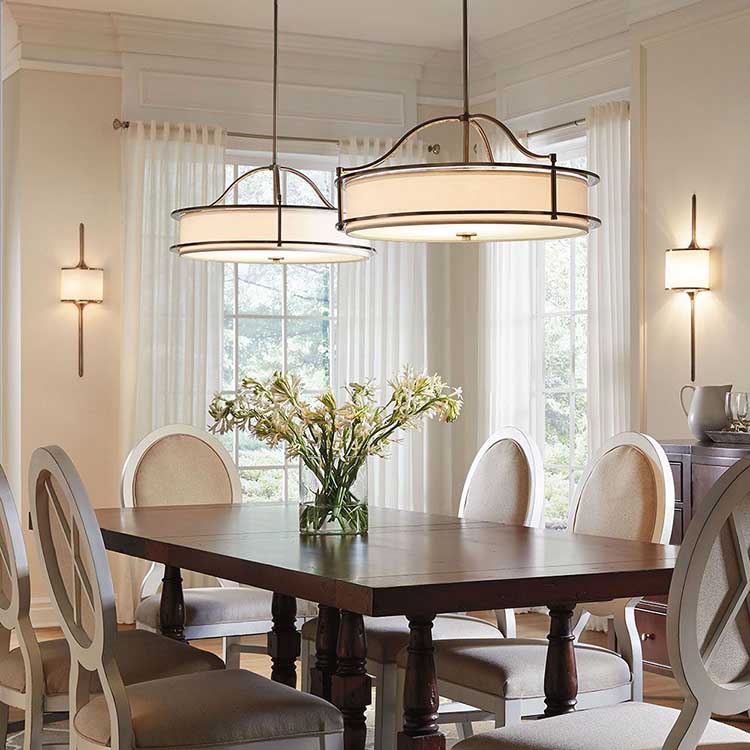
There are countless types of lighting for you to choose from. Source: Pinterest [1]
Chandeliers
Chandeliers are often regarded as one of the most elegant and sophisticated types of lighting fixtures. They are highly popular in dining rooms styled with classic, elegant, modern, glamorous, or chateau aesthetics.
Chandeliers come in various styles but typically feature multiple arms or branches to hold light bulbs. They are crafted from materials such as crystal, glass, metal, fabric, and beads, offering a wide range of design options to suit different tastes and interior themes.
Pendant lights
Pendant lights are a common choice due to their simplicity and contemporary designs, featuring unique shapes and trendy materials. Unlike chandeliers, where one fixture typically suffices for a dining room, pendant lights require more consideration, especially regarding their size.
A single pendant light can illuminate a smaller dining table effectively, but larger tables or different areas may benefit from multiple pendants arranged in a row or cluster to achieve optimal lighting.
Scones
Sconces are a simpler option for adding both ambient and accent lighting to the dining room, depending on your needs. Despite their small size, sconces are versatile and can be used in uplight, downlight, or adjustable styles according to your preferences, allowing for specific lighting effects.
They are particularly effective for layering light and can be placed around the dining area to minimize glare and enhance the warmth of the atmosphere.
Recessed lighting
Recessed lighting involves lights installed directly into the ceiling and is particularly suitable for Scandinavian or minimalist interiors, or homes with low ceilings or limited space for larger fixtures.
This type of lighting is primarily functional rather than aesthetic-oriented, making it straightforward to select based on practical needs.
How do you choose the right chandelier or light fixture for a dining room?
We've covered the four common types of light fixtures, but how do you choose the right one? Here are the 10 key points that Rowabi believes you should remember to select the most suitable fixture:
Select a shade
Typically, light fixtures offer a variety of shade options beyond just the type of cord used. In this section, we will discuss four popular types of shades: linen, clear glass, opal glass, and metal.
- Linen shades: Linen is a lightweight fabric material that provides a soft and diffused light when used as a shade. It is suitable for dining rooms aiming for a relaxed, casual, or traditional ambiance due to its inherently gentle and subtle vibe.
- Clear Glass Shades: These shades differ from fabric shades in that they do not filter light through a fabric layer, allowing for a clear and distinct illumination. They are well-suited for individuals who prefer modern, minimalist, or industrial styles. Due to their transparent nature, glass shades create a sense of openness and spaciousness in the dining room.
- Opal Glass Shades: They are glass shades with a milky, opaque white color, resulting in a softer and less intense light compared to clear glass. They also aim to achieve a soft and even illumination similar to linen shades but with a slightly different vibe. These shades suit vintage and farmhouse interior styles or unique and modern Art Deco designs.
- Metal Shades: Metal shades, true to their name, are designed for modern or urban-inspired dining spaces. This material exudes a sleek, edgy, and robust appearance. Metal shades contribute to creating a focal point in the room, imparting a sense of cleanliness and a clean aesthetic to the space.
- Rattan Shades: Rattan shades have soared in popularity recently, celebrated for their pure natural allure, intricately woven textures, and effortlessly modern aesthetic. Rattan pendant lights are a perfect match for those embracing modern and minimalist styles, adding a touch of organic elegance to any space.
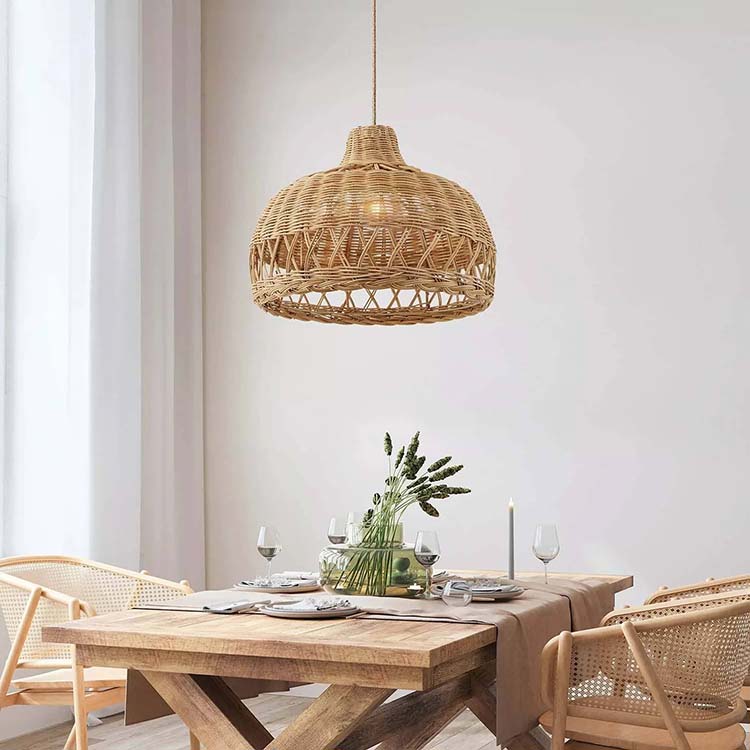
The Bureau Rattan Pendant Light will bring a soft glow to your dining room. Source: Rowabi
Ceiling light measurements
Ceiling light measurements are crucial when selecting and installing fixtures. Firstly, consider the diameter of the light fixture relative to the size of the dining room.
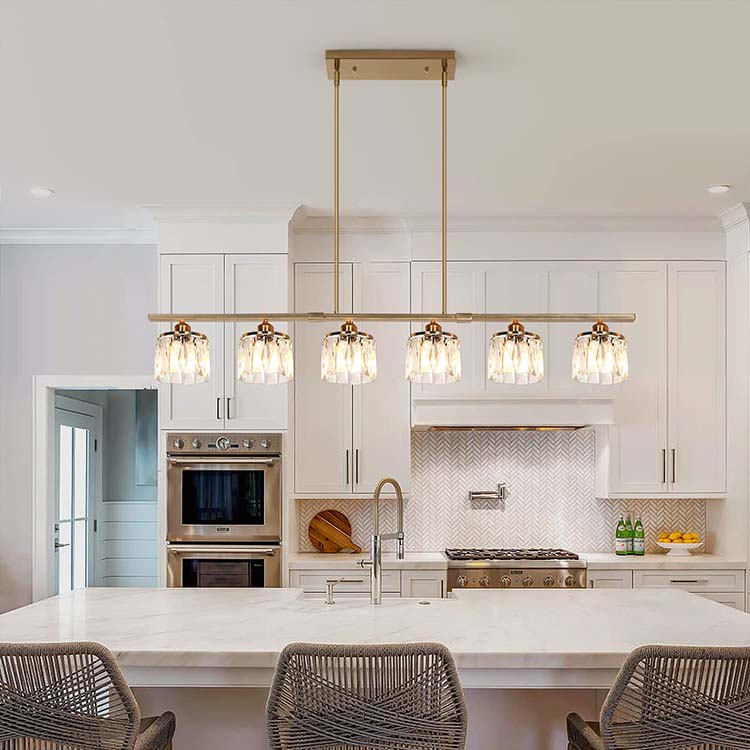
The lights should be positioned proportionately to complement and enhance the room. Source: Amazon [2]
A useful tip is to follow the rule of thumb of choosing a fixture diameter that is about half to two-thirds the width of the dining table, ensuring a balanced visual appearance.
Whether your dining table is large or small, precise measurements are essential to eliminate impractical options.
Next, focus on the hanging length of the fixture, particularly for pendant lights. Typically, pendant lights should hang approximately 30 to 36 inches above the tabletop for optimal lighting.
Use common sense to adjust the pendant length based on ceiling height—higher ceilings may require longer lengths to maintain proportionality, while lower ceilings benefit from shorter lengths to avoid overwhelming the space.
By carefully considering these measurements, you can ensure that your ceiling lights not only illuminate the dining area effectively but also enhance its overall aesthetics and functionality.
Lighting around your table
Whether your home already has existing lighting fixtures or not, it's essential to consider how additional fixtures will impact the overall illumination and ambiance of the space. Two types of lighting fixtures that require careful consideration are wall sconces and table lamps.
Wall sconces: Wall sconces primarily serve as accent lighting fixtures. They are typically mounted on walls and commonly used to illuminate areas where food and drinks are served and people gather to talk and laugh within the dining room, such as the buffet or beverage station. Wall sconces are versatile in style and design, ranging from round to square shapes.
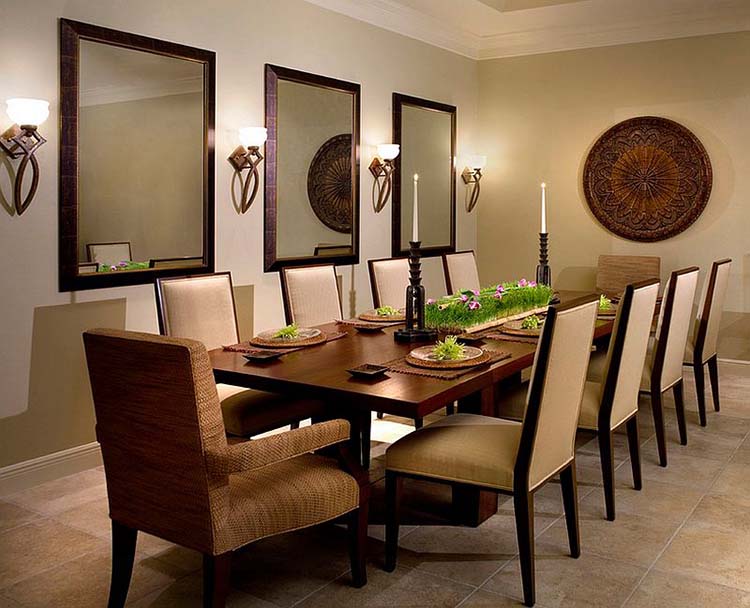
Wall sconces come in various styles and can complement a wide range of decor styles. Source: Decoist [3]
Table lamps: Table lamps are typically placed on tabletops and provide a soft and inviting glow in the dining room. They are often crafted from materials and designed with patterns that exude romantic and stylish aesthetics. As a result, table lamps serve as focal points that add vibrancy and personality to the dining table during special occasions.
Therefore, when selecting a chandelier or pendant light that complements and harmonizes with table lamps, consider how these fixtures use light bulbs, their patterns, and material finishes.
Lighting location
In reality, the most important aspect of lighting is the location to ensure evenly distributed illumination. Pendant lights and chandeliers are typically positioned above the dining table, ideally centered within the room.
If the dining table is not centrally located, additional lights can be added above a kitchen island to supplement the lighting scheme effectively. This strategic placement of fixtures ensures balanced and functional lighting for dining and other activities in the space.
Style
Style is crucial when choosing lighting fixtures because each home adopts a unique decor theme, and every light fixture emits a distinct vibe.
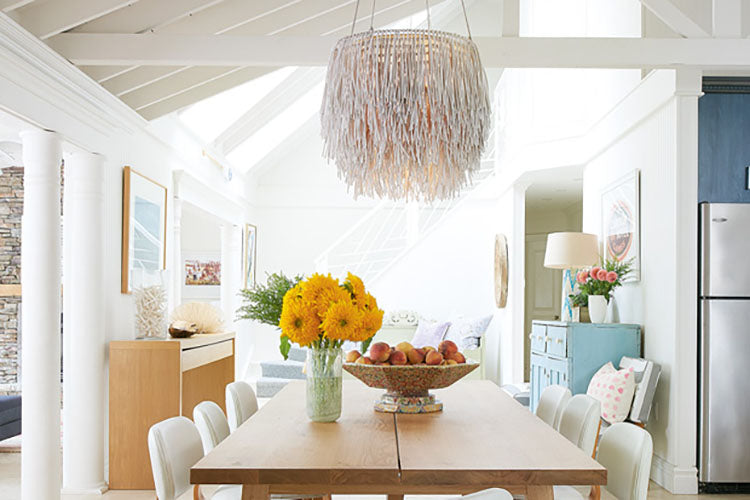
Each light fixture will have its own style and contribute uniquely to the overall ambiance. Source: House & Home [4]
For example, chandeliers and pendant lights from rattan exude a natural, pure, and simplistic beauty that complements farmhouse, modern, or minimalist styles. On the other hand, metal fixtures are suitable for contemporary, industrial, and other similar decor styles, offering a more sleek and urban aesthetic.
Matching the style of your lighting fixtures with your overall decor theme ensures the visual cohesion of your dining room.
Installation
The installation of chandeliers or pendant lights is also important because not everyone is skilled or confident in performing the task. There are two approaches: hiring a professional, which can be costly, or choosing self-installation by following manufacturer guidelines.
If opting for the second method, it's essential to understand the standard and appropriate height for hanging the lights to achieve optimal functionality and aesthetic appeal.
Ambiance
People often choose pendant lights and chandeliers for dining rooms primarily because of the ambiance they create, as they significantly influence the overall vibe of the space.

Choosing pendant lights suitable for creating the right ambiance is a critical factor. Source: Pinterest [5]
Dimmable lighting offers flexibility, allowing you to adjust the brightness to create a cozy and intimate atmosphere for dinner parties or a brighter setting for everyday use. Alternatively, opting for standard LED lights provides practical and functional illumination only.
Multi-pendant dining room lighting
You should also consider whether to use multiple dining light fixtures, especially if your room is spacious and requires more than one fixture to distribute light evenly.
Some fixtures are designed to stand alone effectively without clustering, while others are suitable for grouping together. Therefore, if you intend to cluster them, it's important to choose appropriate fixtures that are designed to be grouped harmoniously.
Medium & large dining room pendant lighting
For medium- to large dining rooms, it's advisable to choose larger light fixtures as focal points to enhance the room's aesthetics and prevent excessive empty space. Opting for larger fixtures is suitable because the room size can accommodate them effectively.
However, it's crucial to consider the height and width of the pendants relative to the size of the dining area to ensure balanced and proportional lighting that complements the overall scale of the space.
How to choose the right size lighting for dining room?
The right size light fixtures for dining room is evaluated based on various factors and steps, which we will outline below.
+ Similar shapes:
It ensures consistency in the lighting fixtures throughout the dining room, maintaining visual harmony. While the fixtures don't need to be identical, they should share similar angularity and structural characteristics to create a cohesive look and feel.
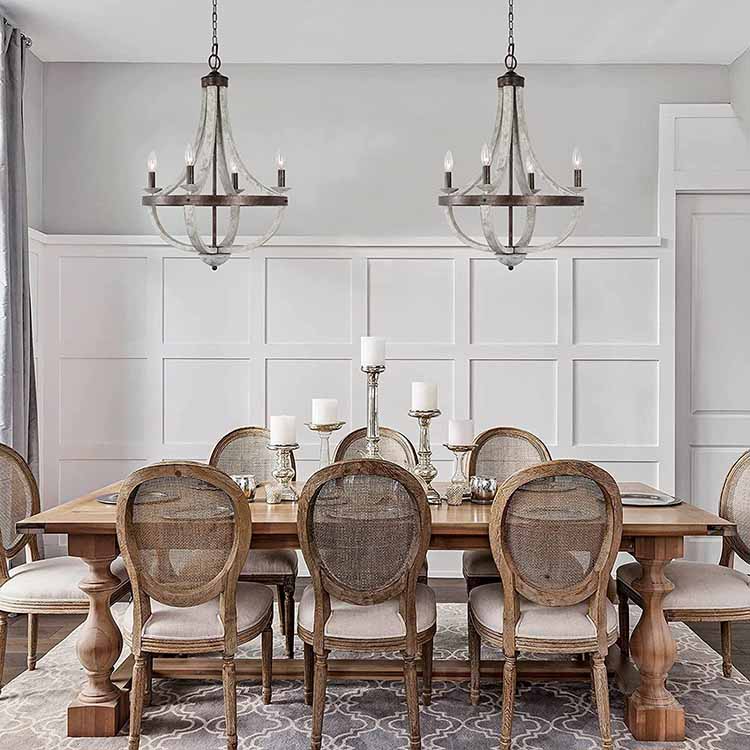
The lights should be identical or similar and placed at a suitable distance from each other. Source: Family HandyMan [6]
+ Do the numbers:
First, you need to measure the dimensions of your dining room and dining table to guide your lighting choices effectively. These measurements are crucial in determining the appropriate size, quantity, and spacing of lighting fixtures for your space.
+ Find the perfect lighting mix:
Achieve an optimal lighting scheme by blending various types of lighting, such as ambient (general illumination), task-oriented (functional lighting), and mood-setting (atmospheric lighting).
+ Ambient lighting:
Once you've selected, ensure that the primary light source (chandelier or pendant) provides ample ambient light to illuminate the entire dining area evenly. Creating a warm and inviting space for gatherings in the dining room relies heavily on having sufficient ambient lighting. Therefore, the chandelier or pendant lights in charge usually possess the biggest size of all lights in the room.
+ Functional lighting:
Task-oriented lighting, such as wall sconces or table lamps, facilitates various activities in the dining room by highlighting essential elements like food presentation, cooking, and dining. Like their function, they do not need to be so big but instead have a moderate size to put everywhere flexibly.
+ Atmospheric lighting:
As mentioned, the dining room focuses on developing atmospheric lighting to create a romantic, delightful, and cozy ambiance.
This can be achieved by incorporating warm yellow light from small lamps or candles, which adds a charming touch. Alternatively, choosing dimmable dining room lighting fixtures allows for adjustable lighting according to preference and mood.
+ The rule of thumb:
When choosing light fixtures for your dining room, follow these guidelines below. For smaller rooms (10' x 10' to 12' x 12'), use fixtures with a 17-20 inch diameter. Medium rooms (12' x 12' to 16' x 16') benefit from 24-36 inch diameter fixtures. Larger rooms (16' x 16' and up) suit fixtures over 36 inches. Ensure the fixture's diameter is 1/2 to 2/3 the width of your table. Hang the fixture 30-36 inches above the table for optimal lighting.
+ Spacing for Multiple Light Fixtures:
Ensure proper spacing between multiple light fixtures, such as pendant lights, to achieve even distribution of light and enhance visual appeal across the dining area. Generally, maintain a spacing of about 24-30 inches between fixtures for balanced lighting coverage.
FAQs
How do I choose a pendant light for my dining room?
- Consider the size and style of your dining table, and choose a pendant light that complements your dining room decor.
How big should a dining room pendant light be?
- Aim for a pendant light diameter that is approximately 1/2 to 2/3 the width of your dining table.
Should dining room chandelier lights face up or down?
- It actually based on your preference. Traditional chandeliers often have lights facing up for ambient lighting, while modern styles may have lights facing down.
What are the rules for dining room chandeliers?
- Ensure the chandelier is proportionate to the size of the room and table, and hang it at the correct height (30-36 inches above the tabletop).
How to hang a chandelier over a table?
- Use a junction box and appropriate hardware to secure the chandelier, adjusting the chain or rod length for optimal height (30-36 inches above the table). Remember always to check the manufacturers’ guidelines first.
Conclusion
Choosing the right dining room chandelier or pendant light is a critical decision that can significantly impact the overall ambiance and style of your space.
With the guidance provided by Rowabi, you now have a well-informed direction to search for the most suitable and accurate options. It's time to transform the look of your dining room, using the right materials and finishes to reflect your personality while maintaining enduring beauty.
Source image:
- [1]: https://www.pinterest.com/pin/298082069095025233/
- [2]: https://www.amazon.com/Ganeed-Kitchen-Fixture-Adjustable-Chandelier/dp/B0BZPHY9LL
- [3]: https://www.decoist.com/2014-05-09/wall-sconces-lighting-fixtures-ideas/
- [4]: https://houseandhome.com/gallery/trend-watch-rattan-pendants/
- [5]: https://www.pinterest.com/pin/408560997446355150/
- [6]: https://www.familyhandyman.com/article/how-to-choose-dining-room-light-fixtures/
Related Posts

22 Best Living Room Ceiling Lighting Ideas, Trends 2024
Ceiling lights have become a popular choice in interior design recently, as they are essential for completing ambient lighting setups. Looking ahead, the coming year promises a variety of exciting ...

How To Choose the Perfect Dining Table Light Fixture
The dining table is where families gather for meals, intimate dinners, and festive occasions. Creating a truly enjoyable dining experience involves thoughtful table arrangements, conceptual design,...


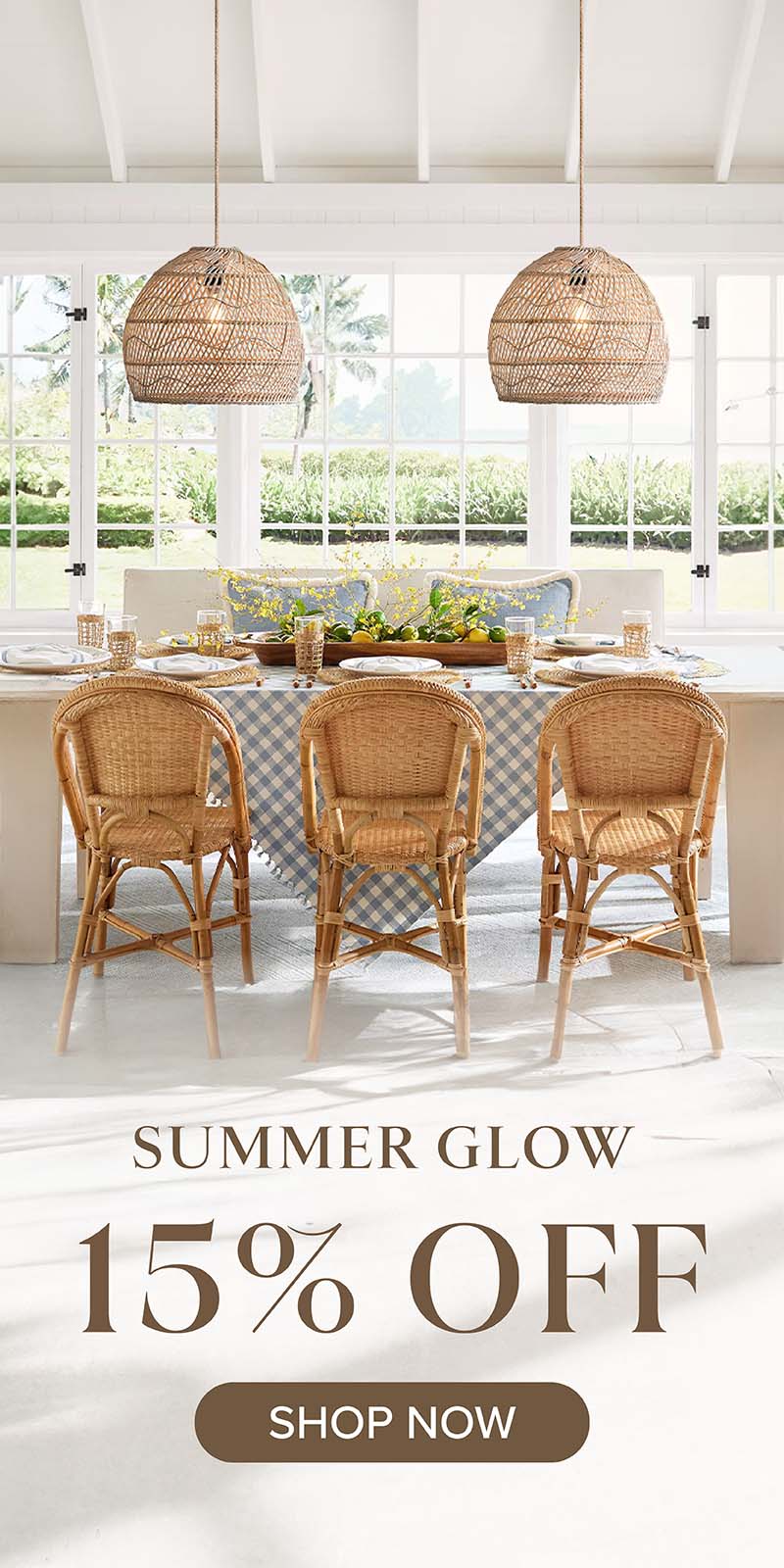
Leave a comment
This site is protected by reCAPTCHA and the Google Privacy Policy and Terms of Service apply.